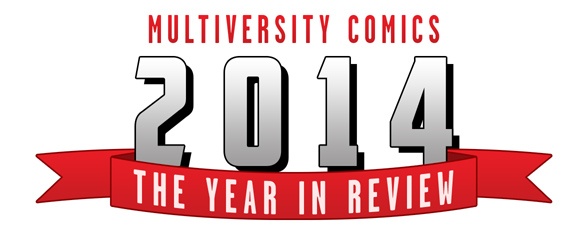
2014 in Review has ended, but there are still tons of things Multiversity’s staff loved in comics from the year. As we approach the end of the year, Multiversity’s staff will share one thing a day they loved from the year, highlighting anything from a comic, creator, cover, comic shop, app, or anything really. As long as it involved comics, it can be featured. We hope you enjoy.

For that reason, among many others, DC’s weekly offerings have been incredibly satisfying, week in and week out. Sure, there are still solicits, but because between the day a solicit is release and the actual issue is released have 12 issues released in between them, the solicits, by default, have to be vague. But that is just one, easy to point to reason, why the weeklies have been such a revelation.
It needs to be noted that while DC has three weekly books – two of which are set to intersect at some point – each book is incredibly different. “Batman Eternal” is a celebration of the Bat-mythos; not in some meta-way like Grant Morrison’s Bat run, but more rooted in the actual comics status quo. Elements from almost every period of Bat-history are in there, as well as fun pieces for the future. Outside of Dick Grayson (notable by his absence), Ra’s al Ghul, Damian Wayne, Two-Face and the Joker, just about every ancillary Bat-character has been present, and used in some of the most effective ways since the dawn of the New 52.

“Earth 2: World’s End,” on the other hand, is a stomp on the gas pedal for a book that was already speeding along. Over the past two and a half years, “Earth 2” has built a world that feels somehow both more open and, because it is featured in only one or two titles a month, more insular than the main New 52 universe. “World’s End” is, essentially, compressing 2+ years of story into a weekly and, at times, really feels like it.
The book features multiple artists per issue and, because of that, can feel a little jumbled at times – add that to the fact that it is plotted by a novelist writing his first “real” comic, and the book has some excuses for being the least consistent, and least satisfying, of the three weeklies. It isn’t a huge dig to say that this is the weakest weekly, if only because the other two have been so strong. The title also suffers from the design of the series – “Batman Eternal” is telling one big, self-contained story, “Futures End” is all mystery and speculation, and “World’s End” is trying to, essentially, end an entire planet’s major stories that have been building since 2012.

The book is always setting up little magic tricks, creating payoffs for situations for which you didn’t think needed or wanted closure. The four-headed writing team certainly favors certain heads more than others, and the art of the book has been solid, if not a bit pedestrian. On a page to page, issue to issue level, “Futures End” has the most variance between greatness and mediocrity, but each week brings at least one “holy shit!” moment, or at least the prospect of next week’s “holy shit” moment. This is, hands down, the first comic I read each Wednesday, and the one that I think about the most until reading the next issue.
But taken together, these three books buck the trend of over-sharing future plot points, bring an air of mystery to the books, take chances, benefit from long-terms storytelling, and reward fans of the properties. That sounds an awful lot like what comics are supposed to be, doesn’t it?






